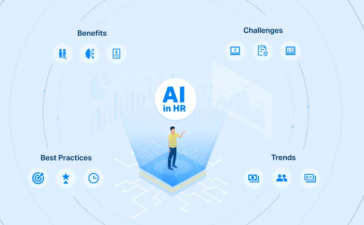Here’s a detailed rephrasing of the provided text:
What is Omnichannel Marketing?
Omnichannel marketing encompasses engaging with customers across various channels, whether in a physical store, online, through text messages, or via social media. It’s a unified approach that ensures customers receive a consistent experience regardless of where they interact with the brand.
Imagine this scenario: you’re shopping online and add an item to your cart but decide against purchasing it. Later, you encounter an ad for that same item on social media. While it may seem coincidental, this is a prime example of omnichannel marketing in action.
Understanding Omnichannel Marketing
The term “omnichannel” combines “omni,” meaning “all,” with “channel,” referring to the different ways customers can engage with a business. This approach integrates multiple customer touchpoints—physical stores, websites, social media, emails, apps, and SMS—to create a seamless experience tailored to individual preferences.
Research reveals that more than half of B2C customers use three to five channels for each purchase or service request. For instance, a customer booking a hotel room might switch between websites and mobile platforms nearly six times. If they encounter inconsistencies or difficulties, they might lose interest in the brand.
Omnichannel customers are more engaged and spend more—up to 1.7 times more than single-channel shoppers. This increased engagement underscores the value of providing a cohesive and integrated experience across various channels.
Examples of Omnichannel Marketing
Omnichannel strategies are prevalent in sectors like retail and healthcare. For example:
- Best Buy enhances its in-store experience by offering smart home technology exploration and pairing it with free in-home advisory services. Their mobile app allows for catalog scanning, curbside pickup, and in-store purchases, supported by their Geek Squad for tech support. This comprehensive approach has led to significant membership growth for their Totaltech support program.
- Sephora excels in omnichannel personalization by utilizing in-app messaging, personalized notifications, and easy booking for in-store consultations. Their in-store technology helps employees access customer preferences, enhancing the shopping experience. Customers who visit the website within 24 hours of a store visit are three times more likely to make a purchase, with average order values being 13% higher.
- Nike embraces an ecosystem approach by offering various apps and platforms, such as SNKRS and Run Club, which facilitate in-person events and individual fitness programs. This broadens the brand experience beyond just products to include community and content interactions.
Impact of COVID-19 on Omnichannel
The COVID-19 pandemic accelerated the adoption of omnichannel strategies as more consumers turned to e-commerce and contactless shopping options. U.S. grocery stores, for instance, saw a significant shift to online sales during the pandemic. Many of these changes are expected to persist, with behaviors like curbside pickup and self-checkout becoming common. Approximately 70% of people who tried self-checkout during the pandemic are likely to continue using it.
Customer Expectations in Omnichannel
Customers now expect a seamless and personalized omnichannel experience, both online and offline. A significant portion of consumers engages in both in-store and online research and shopping. Since the pandemic, over a third of Americans have integrated omnichannel features like buy online, pick up in store, into their regular shopping routines, with many planning to continue this practice. Younger generations, like Gen Z, particularly demand a seamless experience across all channels.
Omnichannel vs. Phygital
Omnichannel marketing is about integrating various channels to create a cohesive customer experience, while “phygital” (a blend of “physical” and “digital”) refers to the merging of physical and digital worlds. Despite the rise of e-commerce, physical stores still account for the majority of retail sales. The future will likely see more personalized experiences, possibly extending into virtual spaces like the metaverse.
Omnichannel vs. Multichannel
The distinction between omnichannel and multichannel lies in their focus. Omnichannel marketing centers on creating a unified customer experience across all channels, ensuring consistency and integration. In contrast, multichannel marketing focuses on disseminating information through various channels without necessarily linking them, which can lead to varied customer experiences across channels.
Omnichannel Personalization
Omnichannel personalization tailors the customer experience across both physical and digital channels, providing unique products, offers, and communications based on individual preferences. Effective personalization can boost revenue by 5 to 15 percent. Implementing omnichannel personalization involves significant investment in technology and rethinking organizational structures, but the benefits include improved customer satisfaction and increased sales.
Key Strategies for Omnichannel Operations
Building a successful omnichannel operation involves several critical areas:
- Strategy and Learning Agenda: Define clear objectives and identify key moments in the customer journey to prioritize use cases that deliver value.
- Digital Touchpoints: Integrate digital elements like mobile apps and interactive screens into physical environments to enhance personalization.
- Decisioning Engine: Use tools to determine the best actions for each customer and measure performance.
- Agile Practices: Adopt flexible, agile approaches to marketing that align with customer needs.
- Field Activation: Ensure frontline staff are trained and aligned with personalization goals to provide a consistent experience.
B2B Omnichannel Insights
Omnichannel strategies are also crucial in B2B contexts, where buyers frequently use multiple channels. A McKinsey survey found that 94% of B2B decision-makers consider the current omnichannel approach as effective as or more effective than before COVID-19. B2B companies must focus on providing a consistent experience across all channels to retain customer loyalty.
For more detailed insights into omnichannel marketing and related strategies, explore McKinsey’s resources on marketing and sales.





